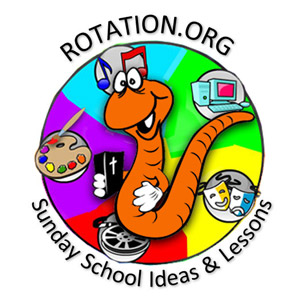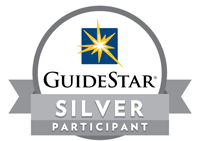While working on the story of Jesus Feeds the 5000 with our Writing Team, we became intrigued by easily we had SMOOSHED TOGETHER the details of John's version of the story with that of the other three Gospel version.
To help the Team decide "which version" to choose and not accidentally combine them or confuse them, we created a "Is That in Matthew or John?" Feeding of the 5000 Quiz, which you can also take.
Other than the story of the cross, "Jesus Feeds the 5000" is the ONLY Jesus story found in ALL FOUR GOSPELS, so obviously, it was an important story in the early church. But equally as important is the fact that the four versions are not identical. John's version is especially unique.
So take the quiz and see how well you know the story. And then compare your % correct to those of everyone else who's since taken the quiz. You can see a snapshot from one point in time in the graphic below. Then, read my Bible study notes about each question down below and in the next post.
Was that in Matthew or John?
Take this Challenging Ten Question Quiz about the Stories of
Jesus Feeding the 5000
Take the Quiz to see how well you think you know this story, then BE SURE TO CLICK "REVIEW ALL ANSWERS" at the end of the quiz for some very interesting insights and comments about these differences.
OR...see the answers below in the next post.
Results are ANONYMOUS.
Don't want to take the quiz?
Jump down to the next post to read the
correct answers and explanations for all ten questions.
Quiz Scores and Insights from our
"Matthew vs John ~ Feeding the 5000" Quiz
...what they reveal about our knowledge of these stories
...and what it means to teachers and lesson writers
from the series, "Insights into the Lesson Writing Process"
As of the date of this post, over 140 of you have taken the "Matthew or John" Feeding the 5000 Quiz --but very few scored higher than 80%. This is understandable as it's not very often that we are TAUGHT the differences between the Gospels, much less asked to recall them! But we didn't create the quiz to demonstrate the inadequacy of people's Bible education. ![]() Rather, we created this challenging quiz to help talk about the importance of WHICH VERSION of a story we select, and the decision-making process behind that selection which can have important lesson-writing and teaching implications.
Rather, we created this challenging quiz to help talk about the importance of WHICH VERSION of a story we select, and the decision-making process behind that selection which can have important lesson-writing and teaching implications.
Many Jesus stories are found in more than one Gospel. And in the case of the Feeding of the 5000, it's found in all FOUR, and each Gospel has slightly different details --some of which are quite profound. So which Gospel version should we pick? And what should we say about these differences?
Some teachers, story resources, and curriculum tend to "blend the Gospels together" and thus "blend away" the interesting difference between the Gospels. The Rotation.org Writing Team believes in the importance of discovering and respecting each Gospel version's uniqueness rather than trying to consolidate differences or whitewash them.
Below are the quiz results as of March 2019. As you can see, Fewer than a third of quiz-takers got more than 7 out of 10 questions right. Read on to discover some of the interesting differences between Matthew and John's version of the story, and their teaching implications...
DIFFERENCES MATTER and WHY WE CHOSE JOHN
The differences between "same" stories found in more than one Gospel, such as Jesus Feeds the 5000 or the different accounts of the Crucifixion, are often quite important and the choice of which version to teach can have profound lesson and teaching implications.
For example, of the four Gospel versions of the Feeding of the 5000, only John mentions the small boy, and only John's version includes an explanation of the miracle. And it was those differences that made us choose John's version of the story to teach children in the Writing Team's Lesson Set.
![]() John's version has one of the few stories that includes a child, and our children could imagine themselves being that child.
John's version has one of the few stories that includes a child, and our children could imagine themselves being that child.
![]() John's version includes an explanation of the miracle and the other three versions don't. John says that the miracle helped the people see who Jesus really was (and wasn't simply a story about sharing food).
John's version includes an explanation of the miracle and the other three versions don't. John says that the miracle helped the people see who Jesus really was (and wasn't simply a story about sharing food).
The differences between the Gospels are even more profound in the accounts of Jesus' death. Each Gospel places different words on Jesus' lips. For example, only Luke has Jesus saying “Father, forgive them, for they do not know what they are doing.” And yet, many movies, storybooks, preachers, and teachers tend to smash all these accounts together --creating a sort of "False Fifth Gospel."
Thus, when teaching John's version of the Feeding story, we shouldn't be sneaking in details from Matthew or Luke just because we find them interesting or "like" that part of the story (not unless we are clearly teaching that these details come from another Gospel). And when we are studying Mark's crucifixion story, we shouldn't be adding in all the other versions from the other three Gospels because this ruins Mark's narrative and focus. Instead, RESPECT EACH GOSPELS' VERSION.
The Writing Team "rules" for teaching a story found in more than one Gospel:
The Early Church decided to PRESERVE the differences between the Gospels when assembling the manuscripts, so we should too.
- Each Gospel writer's story is to be respected.
- Each version is unique and authoritative in its own right.
- The differences are often profound and introduce (or leave out) details which the Gospel writer wanted to be emphasized (or didn't know about or didn't want to include).
- Teaching one version in a Sunday morning children's lesson is enough.
- Combining stories into a "Fifth Gospel Version" not only mistreats the Gospel differences, but it can also create future confusion when students hear the individual stories in worship and other lessons.
- When teaching one version, it's a good idea to mention that the other Gospels have slightly different versions of the story you are using so that kids are surprised when they hear a different version in the future.
Why we are writing this article
These insights were originally written for the Rotation.org Writing Team which often faces the question of "which Gospel version" to use for its lesson sets. In the Rotation Model, we pick the major stories of the Bible and teach them once for four to five weeks in a row. This means we have to choose ONE story and do it well. Whereas, a traditional Sunday School curriculum can pick many different Gospel versions of the same story because a traditional curriculum needs 52 new stories per year and will probably need to get to them all !!! Thus, this year those using traditional curriculum can do one week using Mark's version of the cross story, and next year use Luke's version, and next year Matthew's. That may seem like a logical solution, but hang on...
The problem with this "eventually pick them all" lectionary-based approach is that a one week lesson is nowhere near enough to do justice to each version. By trying to do more we end up teaching less. This is the basis of the Rotation Model --spending time with stories instead of rushing through them one week at a time. And thus, Rotation Modelers have to choose their stories carefully. Read an article about how to create a scope and sequence of stories to teach for the Rotation Model.
Fortunately, the kids will hear the Cross story in worship as well. But that's where the "False Fifth Gospel" starts to form because the end result is one vague idea of the story of the cross where individual details begin to be forgotten.
However, unlike the story of the Cross, kids won't hear the story of the 5000 fed every year, even though it is the only story other than the cross found in all four Gospels. So our choice is even more important because in a four or five year curriculum, we will get one "rotation" of four or five weeks to teach this important story. And thus, WHICH version really matters to us, and handling it right even more important. No smooshing or fudging.
Read the 5000 Bible Background for more interesting differences and insights.
 Jump down to the next post to read the
Jump down to the next post to read the
correct answers and explanations for all ten questions!
"Insights into the Lesson Writing Process" is a collection of articles written by Neil MacQueen for the Writing Team training process and our membership.
One of the founders of Rotation.org and the Rotation Model, Neil has been working as the Lead Writer and writer-trainer for our Writing Team. We've asked Neil to "pull back the curtain" and put into writing for posterity the thought-process behind the multitude of decisions and creative brainstorming that result in the Writing Team's lesson sets.
Whether you're a lesson writer, Christian educator, or volunteer teacher, we hope you enjoy the discussion these insights are designed to engage. If you'd like to take part in the Writing Team process, contact us.


